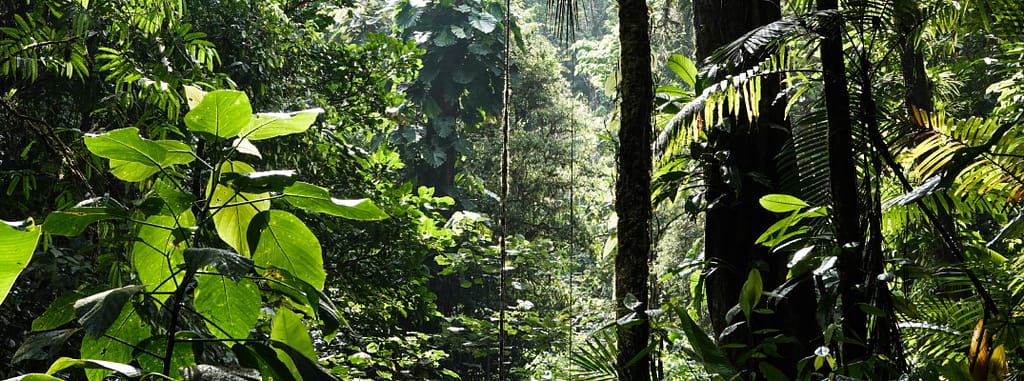The United Nations has designated May 22nd as the International day of Biological diversity (Biodiversity). Why should you care about biodiversity? Well, this article covers the very basics of the topic.
What is biodiversity?
Biological diversity, or biodiversity, refers to the varied populations of life species present on Earth. It includes all plants, animals, fungi and microorganisms as well as their surrounding habitats and ecosystems. Not to get too technical, but there are typically three levels of biodiversity. They classify the nuances that exist within and between genes, species and ecosystems. Genetic diversity refers to all the different genes contained in all individual plants and organisms; it can occur within and between species. Species diversity refers to the variations within and between populations of species while Ecosystem Diversity is the difference between and within the communities, habitats and ecological processes.
Why should we care about biodiversity?
Like Pocahontas sang, “We are all connected to each other, in a circle- in a loop that never ends”. We may not be aware of just how dependent we are on a balanced, healthy ecosystem and hence, the plants, animals and microorganisms that make it so.
The food chain is a very basic example of this dependence. Human beings depend on the existence of some plants and animals to feed ourselves. These plants and animals depend on other plants, animals and organisms to exist and thrive. The soils that support plant growth depend on the microorganisms that keep it healthy. It can therefore be deduced that the fewer animals, plants and microorganisms that exist, the fewer humans that will exist as well.
Besides our reliance on these species for food, humans get other benefits. We use bamboo and wood from trees to build our homes, clothe ourselves, and even depend on bacteria and plants for medicinal purposes.
Biodiversity is the tool that ensures all life on this planet can exist sustainably for years, hopefully generations, to come.
Threats to biodiversity
There are currently multiple threats to the biodiversity of this earth and human beings seem to be at the centre. The Department of Geography at Penn State University coined the acronym “H.I.P.P.O” to help us remember the 5 biggest ones.

Habitat Loss
The loss of habitat is considered to be the primary cause of biodiversity loss worldwide and can be caused by human activity and natural processes. Humans contribute to the loss of habitat through urbanization, industrial activity, deforestation and dredging. If you live in a major city, you are no stranger to these activities. Natural processes, like volcano eruptions, can also lead to the loss of habitat.
Invasive Species
The introduction of alien species into an area that they have not occupied can disrupt the ecology of natural ecosystems. These alien species tend to grow aggressively and starve the native plants which could reduce them or completely erase them. Consequently, this process will affect the habitat of insects, birds and other wildlife that depend on them. The same goes for animals. The brown tree snake, native to Australia, was accidentally introduced to a region in Guam. The region lacked predators to control this snake species’ population which helped them multiply rapidly. Eventually, they led to the extinction of the resident bird species within the region.
Pollution
There are different forms of pollution- air, water, soil, noise, light, thermal and radioactive pollution. It generally involves excess/ overaccumulation of toxic and natural elements (e.g. CO2) and contributes to global warming, climate change and subtle to aggressive changes in the ecosystems. Accordingly, this affects the health of the environments and the inhabitants that occupy them.
Population (Human)
The human population has rapidly increased over time. Consequently, the amount of resources we require from the Earth has also increased. These include land for shelter & recreation, food and resources mined from the ground. These activities have contributed to the other listed threats to biodiversity within our planet.
Overharvesting/ Overexploitation
The excessive exploitation of species through fishing, hunting and harvesting contributes greatly to the loss of biodiversity. This is worsened by poaching and other activities that provide a profit to those who participate in these activities.
What we can do to help
A lot of the solutions require our respective Government agencies to step up and take charge. However, there are ways individuals can contribute to the fight against biodiversity loss:
- Creation of policies by the government to monitor and control deforestation, loss of wetlands and dredging activities. When these activities are deemed necessary, alternative solutions should be implemented to minimize their negative effects
- Invasive/alien species should be prevented from populating areas they are not native to.
- There are multiple ways and scales of activities that we, humans, can take to drastically reduce pollution. Recycling, conserving energy, reducing the emissions from cars by utilizing public transportation or carpooling. Generally, we should be looking
- Enforce rules against poaching, over-fishing and the general exploitation of species
- Individuals should be more attentive the what they consume and how it was sourced
- Education! Humans, as the major contributors to each of the threats, should be educated on our impacts. Hopefully this makes us more conscious of the choices we make in our daily lives.

